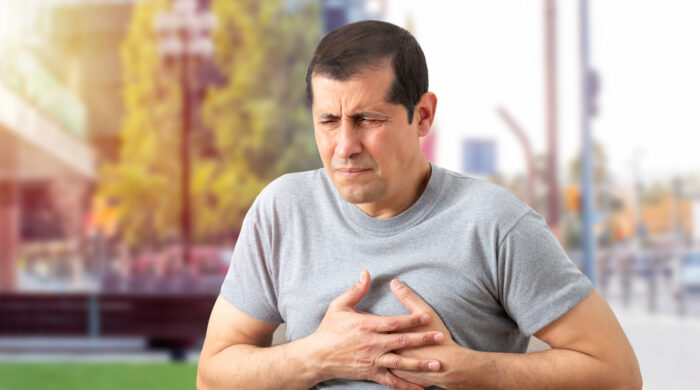Each year, over 800,000 Americans experience heart attacks, and for 3/4 of those individuals, it’s their first cardiac event. Because 50% of adults in the US currently have at least one risk factor for a heart attack, it’s important to know the warning signs.
In this post, we’ll explain what a heart attack is, share the latest statistics, and inform you of the signs of a heart attack. We’ll also let you know how to get help from Western Washington Medical Group if you are at risk for a heart attack.
What is considered a heart attack?
A heart attack can result when the heart muscle doesn’t receive a sufficient amount of blood. Plaque in the arteries, most commonly made up of cholesterol or fat, narrows the arteries, restricting blood flow. The plaque may rupture and form a clot that blocks blood flow, and as a result, significant, permanent damage to the heart muscle can occur.
How common are heart attacks?
Half of all Americans have at least one of the three main risk factors for a heart attack: smoking, high blood pressure, or high cholesterol. Each year, over 800,000 people have heart attacks, and for 75% of them, it’s their first.
Approximately 10% of heart attacks are fatal. Advancements in medicine and awareness by the general public about how to prevent heart attacks has reduced the number of deaths from them in recent years. For comparison, the mortality rates for heart attacks has declined roughly 50% since 1980.
What are the signs of a heart attack?
It’s important to know the signs of a heart attack for both men and women, so if it happens to you or a loved one, you can seek care as soon as possible. The sooner that treatment is administered, the better chance the patient has of surviving and avoiding long-term damage to their heart.
In the event of a heart attack, both men and women often experience chest pains or discomfort that is sustained for a number of minutes, but sometimes comes and goes. Patients describe the sensation as a squeezing or uncomfortable pressure that feels unlike symptoms they’ve experienced for other ailments. In addition, they’ll often (but not always) have shortness of breath that may arrive at the same time as the discomfort.
Men may also feel discomfort in one or both arms (the left is more common) or shoulders.
Women may feel the discomfort in their arms as well, or their abdomen, back, neck and/or jaw. Other symptoms reported by women who’ve survived heart attacks include shortness of breath, nausea, dizziness, vomiting, lightheadedness and breaking out in a cold sweat.
Women’s symptoms also begin to arrive farther in advance than men’s do, sometimes a full month prior to the actual heart attack. Severe fatigue after a normal exercise routine, or just feeling very heavy and tired, could be an additional sign of an impending heart attack.
How to Prevent Heart Attacks
To prevent heart attacks, both men and women should get 30 minutes of aerobic exercise per day, avoid smoking (or quit if it’s already a habit) and maintain a healthy weight. It’s also helpful to monitor blood pressure and cholesterol levels regularly. In addition, those with heart attack risk factors should eat a diet rich in fruits and vegetables, whole grains and fish, and low in processed foods and simple carbohydrates.
Individuals who have had one or more heart attacks should follow the advice of their Cardiology care team.
Immediate Next Steps
If you’re experiencing the symptoms of a heart attack, call 911 immediately.
If you have one or more of the risk factors for a heart attack, request an appointment from Western Washington Medical Group’s Cardiology team to have your heart checked. We provide a broad range of diagnostic services and options for remote patient monitoring.
For more general inquiries, please complete our general contact form.
